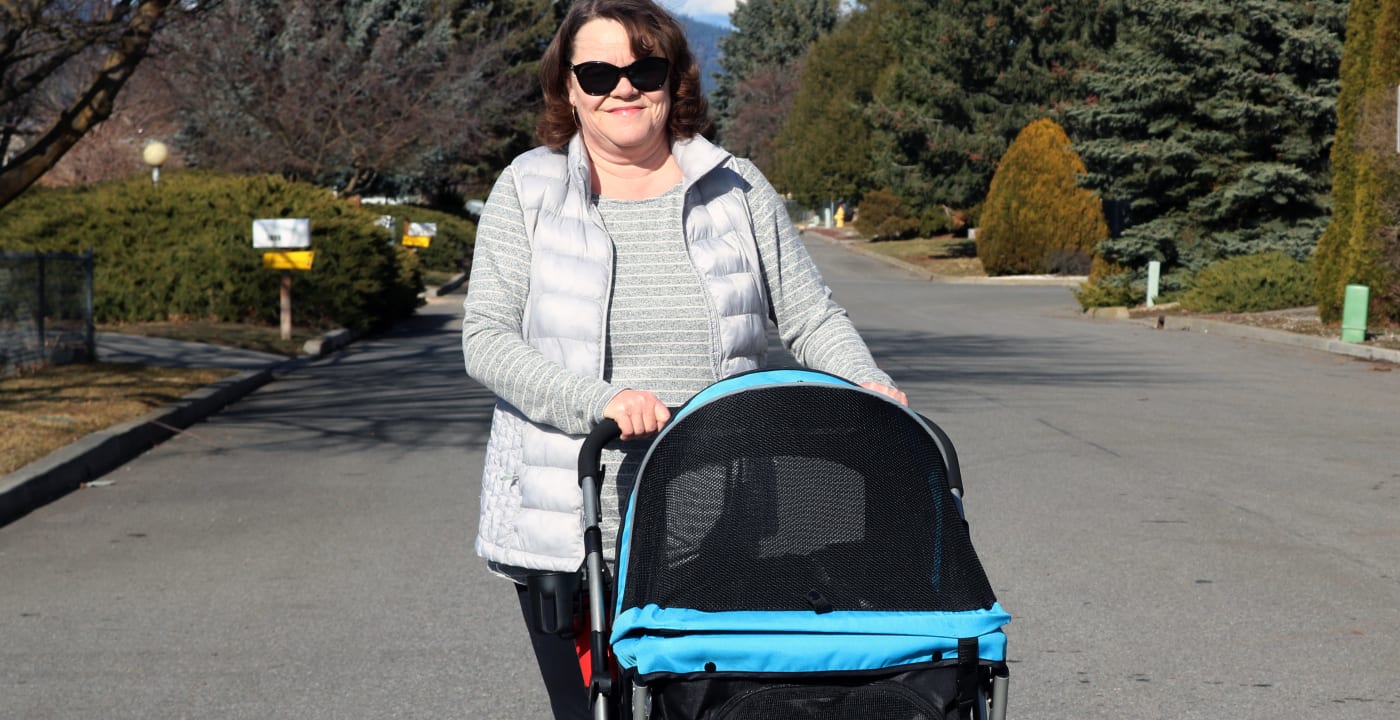‘I can survive anything’: How one woman turned a ‘widow-maker’ heart attack into a second chance at life

When 47-year-old Sami Liebman started to feel a burning sensation in her chest, she thought it was just the aftermath of a heated phone conversation she’d had with a family member. You’re just mad, she told herself. But later that day, as she waited in the car to pick up her grandson from preschool, the feeling intensified.
“By the time I got my grandson back to the car, I was bawling,” says Liebman. “I could barely breathe — it was like an elephant was sitting on my chest.”
Liebman was suffering a particularly deadly type of heart attack commonly known as the widow maker. Ultimately, rapid emergency care and effective treatment saved Liebman’s life, but that day became more than just a harrowing memory. It was a turning point that prompted Liebman to transform her health.
Right care, right place, right time
On that fateful day in 2017 when Liebman experienced her heart attack, she was rushed to MultiCare Valley Hospital before being transferred to the Pulse Heart Institute team at MultiCare Deaconess Hospital.
An angiogram revealed she had a 90 percent blockage in a primary artery that feeds the heart with blood, oxygen and other nutrients. In the absence of swift care, a blockage of such magnitude in this region of the heart can cause permanent damage in minutes, hence its notorious nickname.
To restore blood flow to Liebman’s heart, the Pulse team inserted a stent (a tiny tube) into her blocked artery to keep it open. After a two-night hospital stay, she returned home.
“Everybody I interacted with at Pulse was dedicated to making sure that I was taken care of, from the doctors in the hospital to the staff who called me on the phone after I was out to make sure I was doing OK,” Liebman says.
Dangerous blockages like the one Liebman experienced are caused by an accumulation of fatty deposits — known as plaque — in the arteries over time. A range of risk factors can contribute to this buildup, many of which affected Liebman, such as diabetes, high cholesterol, high blood pressure and excess weight.
Following recovery from her heart attack, Liebman knew she needed to take steps to prevent another one, but sustainable change remained elusive.
A caring provider, a game-changing book
In 2020, a desire to improve her health brought Liebman to Gregory Lang, PA, a physician assistant who specializes in general cardiology at Pulse Heart Institute. His kind demeanor and straightforward approach to medicine resonated with Liebman, putting her on the path to take better care of her body.
“My goal isn’t necessarily to help people live longer, it’s about helping them to live healthier over the course of their life,” says Lang. “For me, it’s not about just prescribing medications and then moving on to the next patient. I want people to really understand what they need to do to avoid a heart attack, as well as the reasoning behind it.”
Among other suggestions, Lang recommended a book to Liebman that changed her life: “Dr. Bernstein’s Diabetes Solution: The Complete Guide to Achieving Normal Blood Sugars” by Richard Bernstein, MD, who also lives with diabetes.
“I’ve been a diabetic for over 30 years, and I learned more about my condition and how to manage it from reading that book than anywhere else,” says Liebman. “I couldn’t put it down.”
One fact Liebman learned was that having good control over her blood sugar levels through diet and exercise was key for maintaining the health of her heart.
“High blood sugar levels can be very harmful for the heart in the long run, causing damage to blood vessels and nerves,” says Lang. “Also, when a person with diabetes has consistently high blood sugar levels, the more insulin they may need on a daily basis, and weight gain and high insulin intake often go hand in hand.”
Determined to overhaul the way she lived, Liebman changed her medication regimen and implemented several recommendations from Lang as well as Dr. Bernstein’s book. She eliminated processed food and carbohydrates like bread, pasta and rice from her diet, focusing instead on lean meats and vegetables. She gave up drinking alcohol and started walking three to five miles most days.
Over a period of five months, Liebman lost 50 pounds. Her cholesterol dropped more than 70 points. Her A1C — a measure of a person’s average blood sugar levels over a three-month period — drastically improved, and she was able to lower her intake of insulin.
“Greg was monumental in helping me change my lifestyle,” Liebman says. “He never doubted I could do it, and it was his support — not just the support of my family — that made it possible to keep going.”
In November 2021, Liebman was honored through the Heart of the Zags program. A partnership between Gonzaga University and Pulse Heart Institute, Heart of the Zags features a Pulse patient during halftime at Gonzaga men’s home basketball games. Featured patients receive Pulse Heart Institute gear as well as free tickets to the game.
Today, Liebman finds she has more energy and more stamina; she no longer gets winded going up and down the stairs. Another change is a new tattoo.
“I felt like it was important to acknowledge what I went through, so I got a tattoo of a sea turtle,” says Liebman. “It’s very tranquil and peaceful, which is what my life is like now. It reminds me that if I can survive that heart attack, I can survive anything.”



